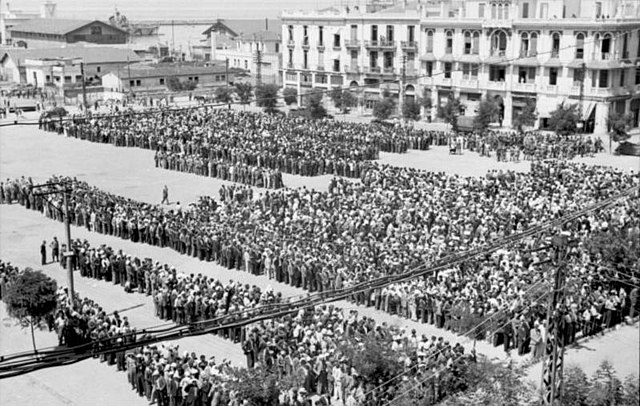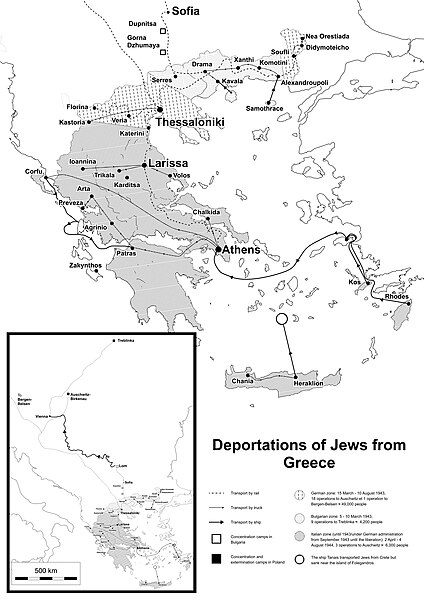Jewish cemetery of Salonica
The Jewish cemetery of Salonica was established in the late fifteenth century by Sephardic Jews fleeing the expulsion of Jews from Spain, covered around 350,000 square metres (3,800,000 sq ft) and contained almost 500,000 burials. The cemetery's expropriation was envisioned in the urban redevelopment plan following the 1917 Great Fire of Thessaloniki, but strongly opposed by the Jewish community as disturbing the graves violated Jewish law. The cemetery was ultimately destroyed in December 1942 by the municipality of Thessaloniki as part of the Holocaust in Greece during the Axis occupation of Greece. The headstones were used as building materials around the city, including for Greek Orthodox churches, while the Aristotle University of Thessaloniki was built on the grounds. The Jewish community never received compensation for the expropriation of the land, valued at 1.5 billion drachmas in 1943.

British officer looking at gravestones from the desecrated Jewish cemetery used to construct German defences, 1944
A 19th-century postcard of the cemetery
Tombstones from the cemetery were used for the reconstruction of the Hagios Demetrios basilica.
The Holocaust in Greece was the mass murder of Greek Jews, mostly as a result of their deportation to Auschwitz concentration camp, during World War II. By 1945, between 82 and 92 percent of Greek Jews had been murdered, one of the highest proportions in Europe.
A young woman weeps during the deportation of the Romaniote Jews of Ioannina on 25 March 1944. Almost all were murdered at Auschwitz-Birkenau.
"Jews undesirable" placard in Salonica, 1941
Roundup of 9,000 Jews in Salonica, 11 July 1942
Deportations of Jews from Greece.1943-1944. Anastasios Karababas, In the Footsteps of the Jews of Greece (Prologue by Yiannis Boutaris), Vallentine Mitchell, London/Chicago, 2024, p.15







